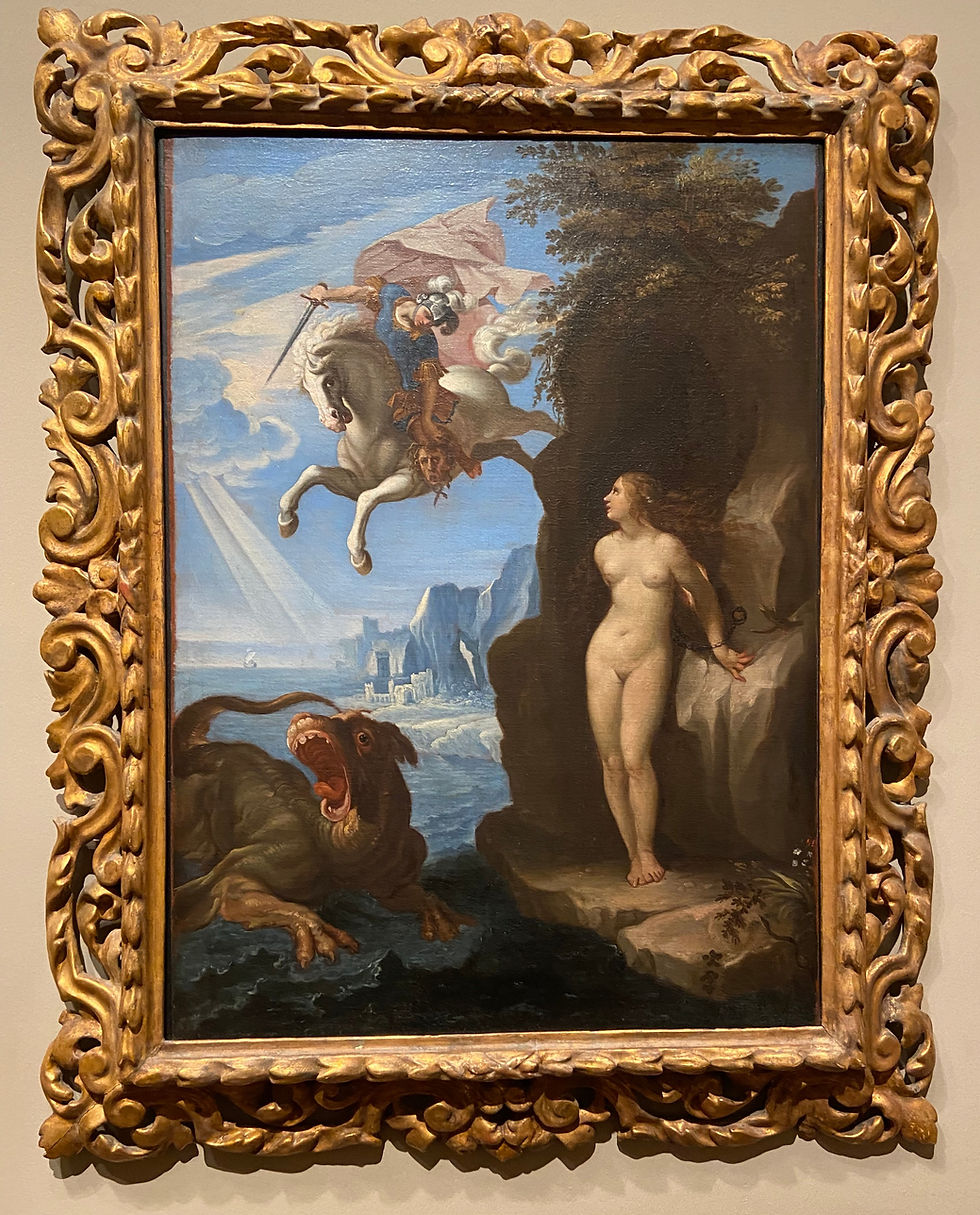Head of the demon
- James Tyler
- Sep 16, 2022
- 2 min read
Updated: Nov 17, 2023
Say the name Ringling, and images of the circus will likely come to mind. While there’s plenty of circus memorabilia to enjoy at the John and Mable Ringling Museum of Art in Sarasota, Florida, I have long enjoyed the Ringlings’ wide-ranging collection of artworks.
Religious-themed art is well represented and interesting there, but I’ve always enjoyed stopping to see a dramatic painting by Giuseppe Cesari, who was the principal painter to Pope Clement VIII in the early 17th century. My interest in astronomy always draws me to Cesari’s “Perseus and Andromeda.”

This oil painting from about 1630 shows the mythological scene from Ovid’s Metamorphosis. Swooping down from the sky on a white horse, Perseus scares off Cetus, the sea monster, which had been threatening to devour Andromeda, daughter of Ethiopian king Cepheus and Queen Cassiopeia. Andromeda is chained to a rock beside the sea as a sacrifice to the monster that had been tormenting the kingdom.
This rescue scene from Greek mythology has been depicted by many artists over the centuries. In Cesari’s painting, Perseus holds a sword in one hand and the head of the Gorgon Medusa in the other. It’s the severed head of Medusa that Perseus uses to destroy Cetus.
Medusa, a monster with snakes writhing on her head, could turn anyone who looked directly at her face to stone. Perseus had been able to lop off Medusa’s head and was returning home with it when he came across Andromeda’s plight.
The night sky recreates this drama with constellations of Perseus, Andromeda, Cassiopeia, Cepheus and Cetus. What I’ve always found interesting is the head of Medusa. That’s represented by the star Algol in the constellation of Perseus. Algol – which comes from the Arabic phrase “raʾs al-ghūl,” meaning “head of the ghoul” or Demon’s Head – is an eclipsing binary star. As a variable star, Algol waxes and wanes in brightness, completing a cycle in about three days. It could be said to be winking.
There’s a great deal of scientific understanding of variable stars now. Long ago, Algol was well known as the Demon Star and as the severed head of Medusa. It makes for a great story, and myth and science meet up in “Perseus and Andromeda.” Just don’t be scared to look at it to see.
Cover image credits: Perseus and Medusa from Uranographia by Johannes Hevelius. Image via Wikimedia Commons.
Body image credits: Perseus and Andromeda, 1620-30, by Giuseppe Cesari. Displayed at The John and Mable Ringling Museum of Art.



댓글